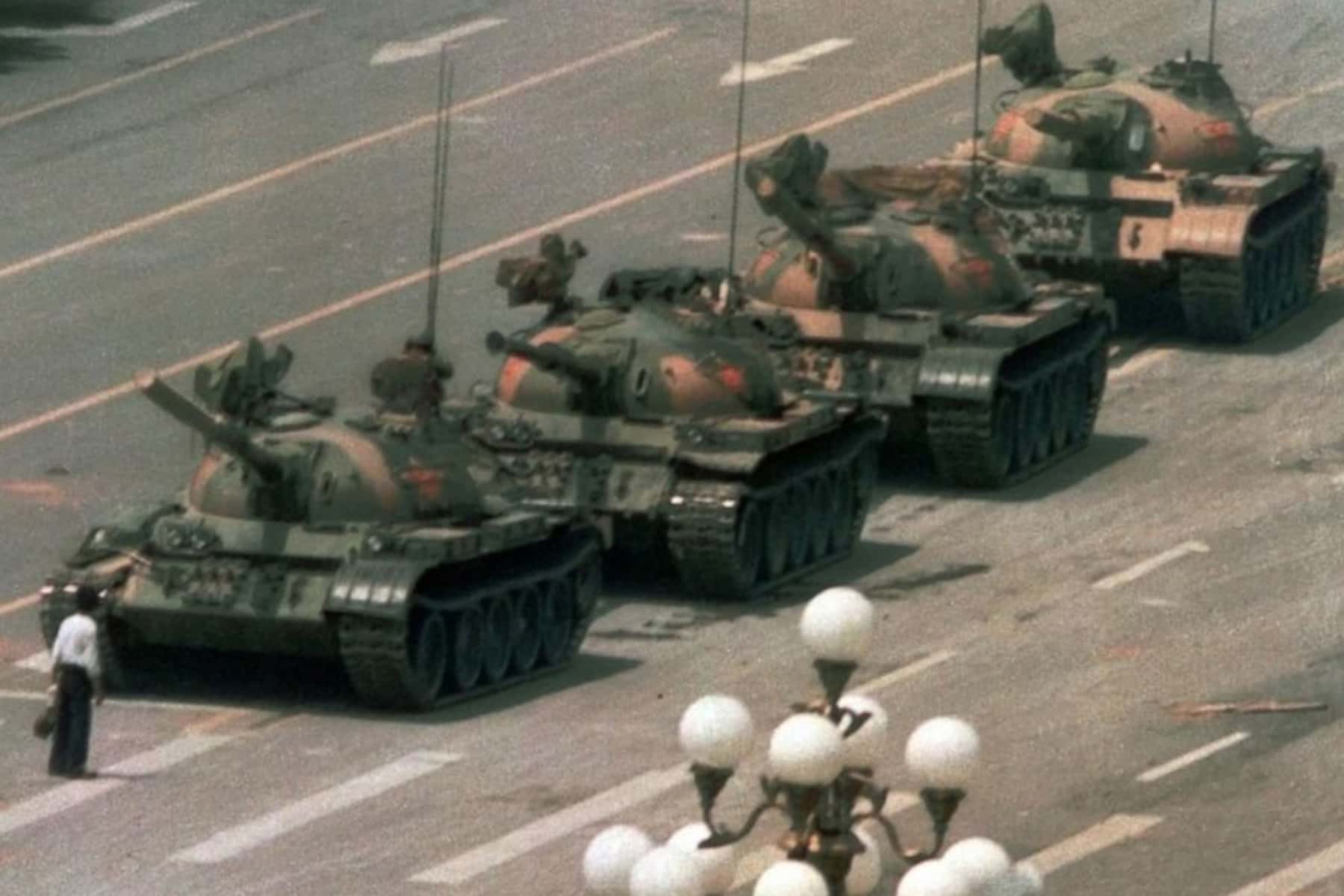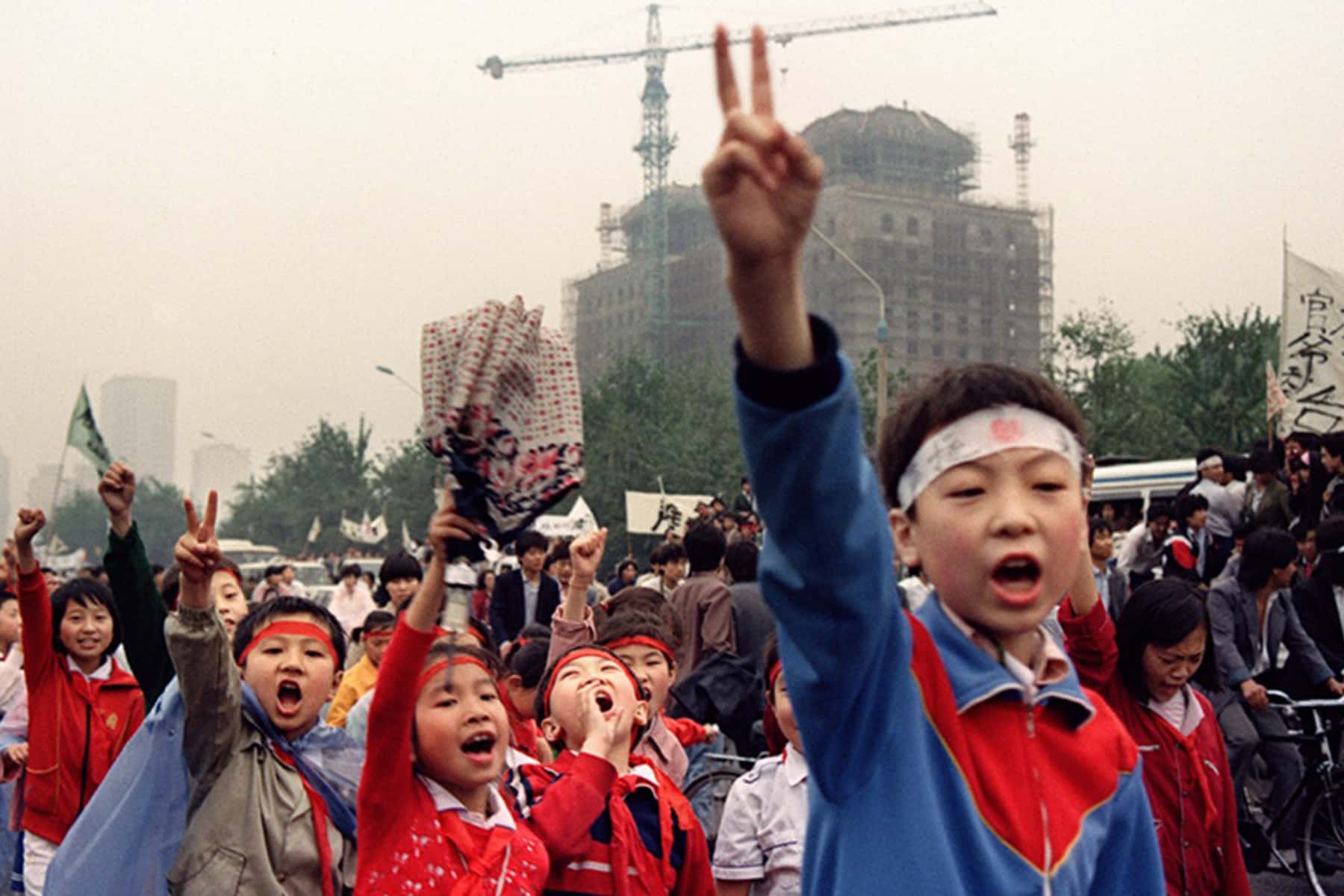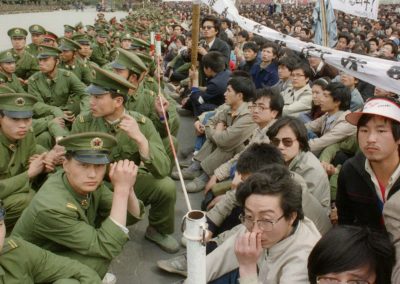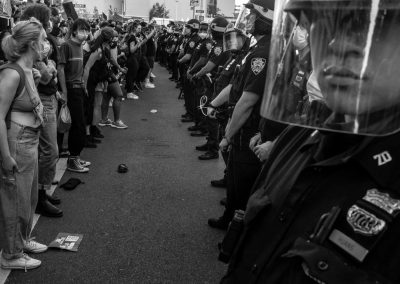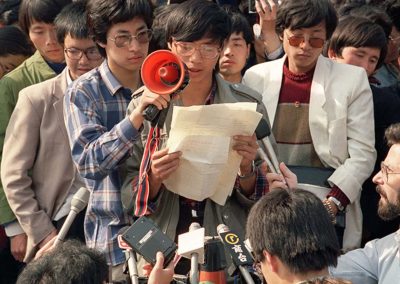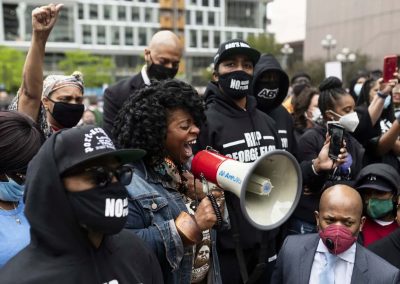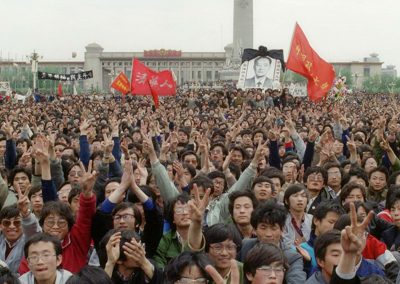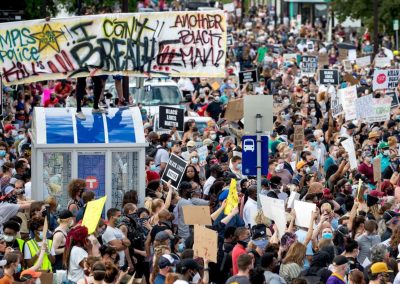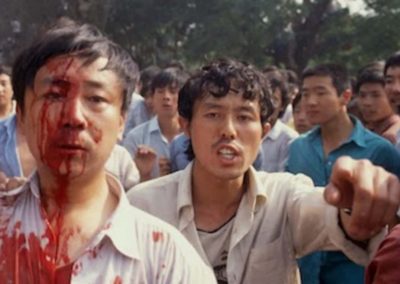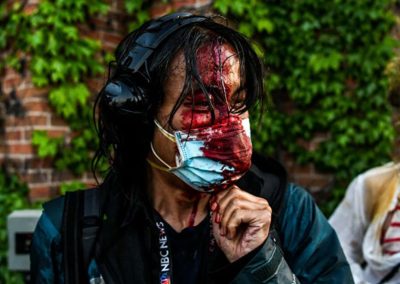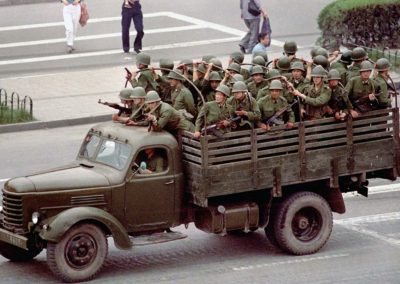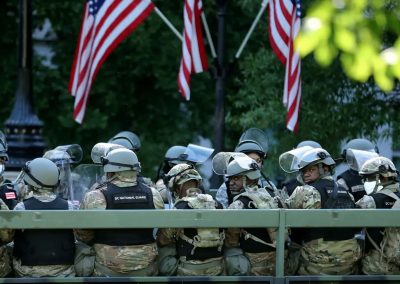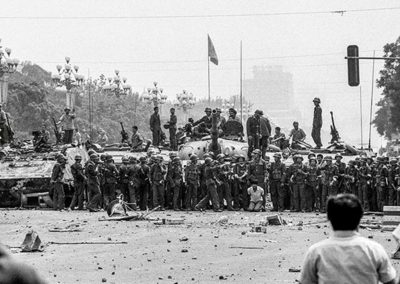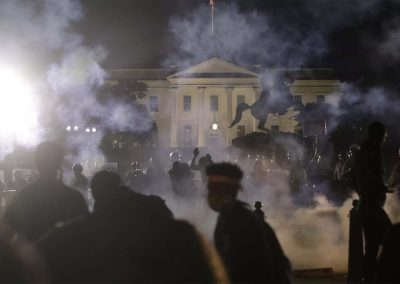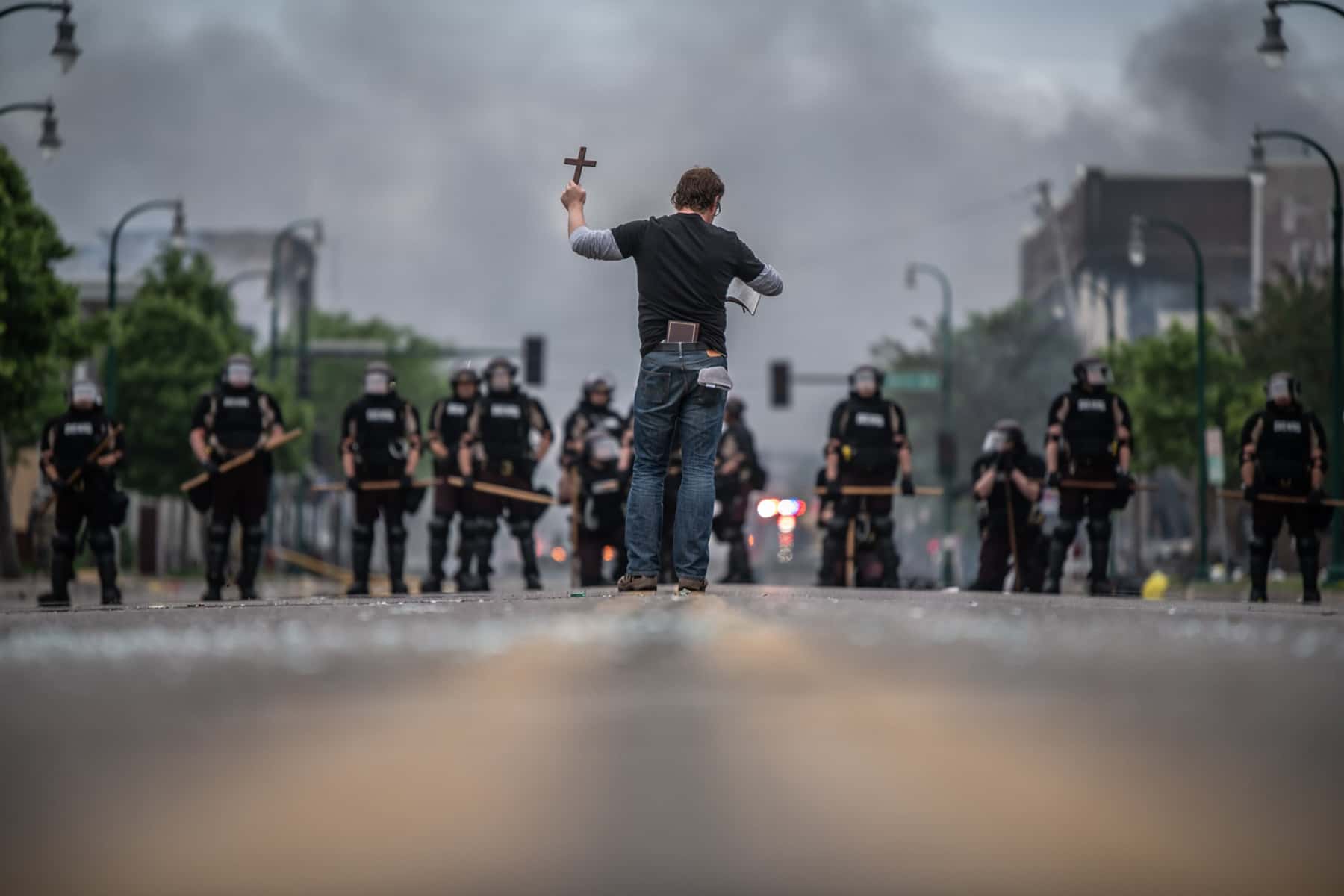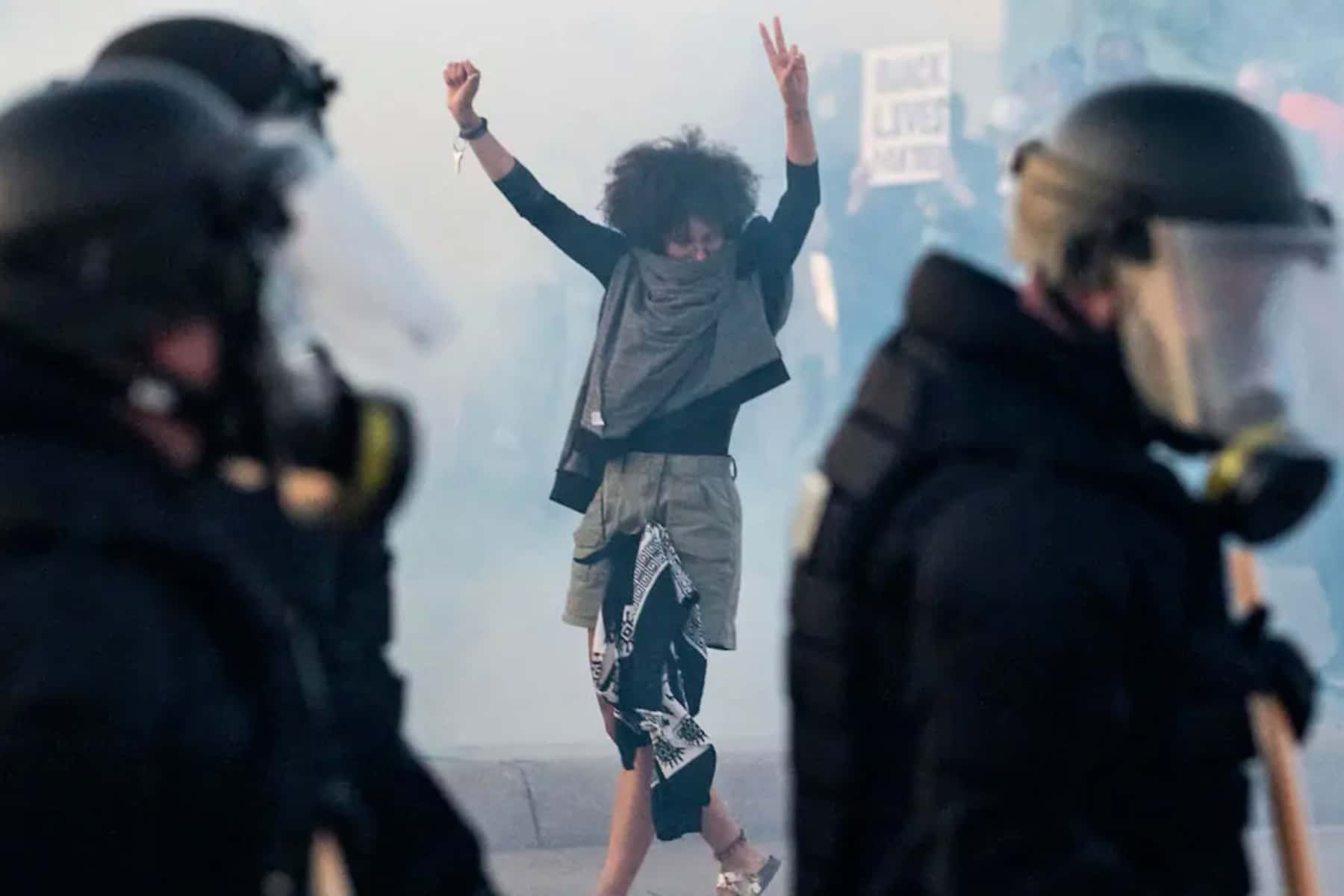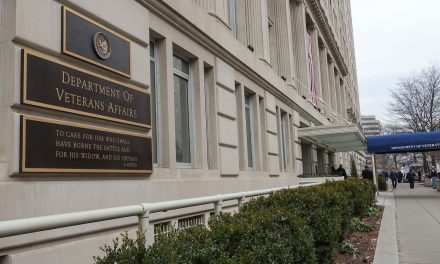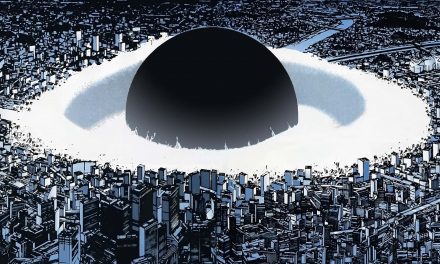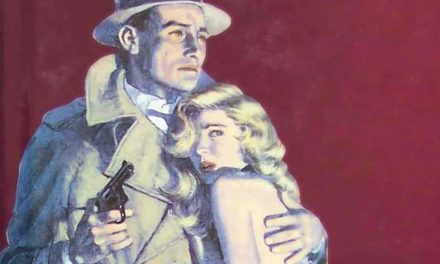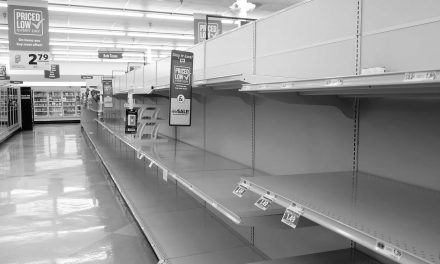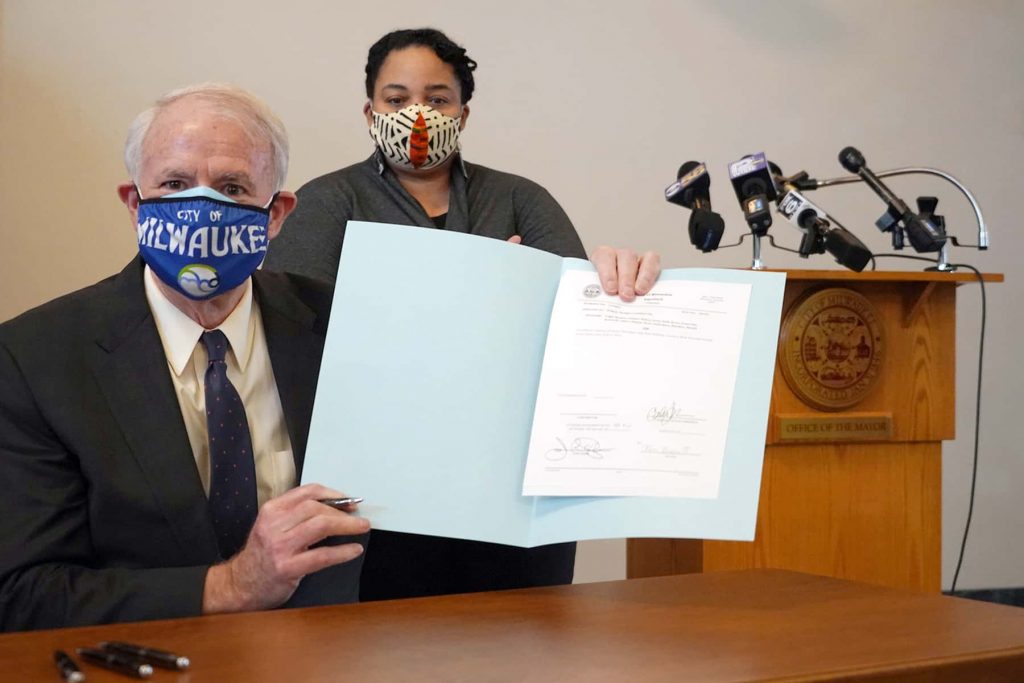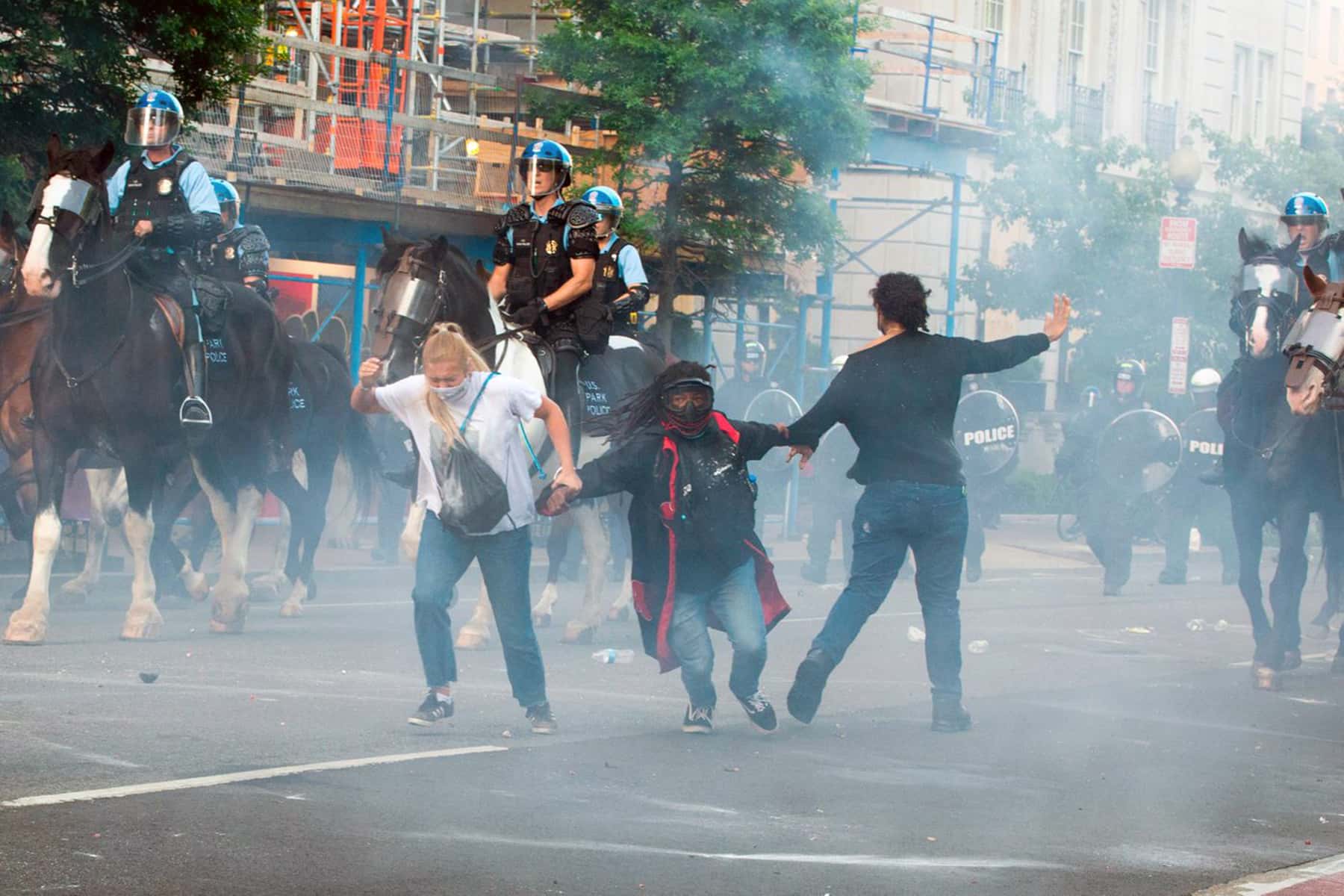
Several thousand peaceful protesters had gathered for more demonstrations on June 1 at Lafayette Park across from the White House, following the police killing of George Floyd. President Donald Trump had those American citizens attacked with toxic tear gas to clear a path for a photo op.
Trump had announced he would soon be addressing the nation from the White House Rose Garden, as a 7:00 p.m. curfew in the city loomed and a mass of law enforcement, including U.S. Secret Service agents, Park Police and National Guardsmen, stood sentry, many dressed in riot gear.
Moments before 6:30 p.m., just when Trump said he would begin his address, the officers suddenly marched forward, directly confronting the protesters as many held up their hands, saying, “Don’t shoot.”
Soon, law enforcement officers were aggressively forcing the protesters back, firing tear gas and deploying flash bangs into the crowd to disperse them from the park for seemingly no reason. It was a jarring scene as police in the nation’s capital forcefully cleared young men and women gathered legally in a public park on a sunny evening, all of it on live television. With smoke still wafting and isolated tussles continuing in the crowd, Trump emerged in the Rose Garden for a dramatic split-screen of his own creation.
“I am your president of law and order and an ally of all peaceful protesters,” he declared, before demanding that governors across the nation deploy the National Guard “in sufficient numbers that we dominate the streets.” And he warned that, if they refused, he would deploy the United States military “and quickly solve the problem for them.”
As an additional show of force, Trump announced he was deploying even more of the military to Washington, DC, giving it the feel of an armed, locked-down city after days of violent clashes, arson and looting.
“As we speak I am dispatching thousands and thousands of heavily armed soldiers,” he said, as explosions rang out in the background. “We are putting everybody on warning.”
Then, before departing, Trump announced he wasn’t done for the evening, and would be “going to pay my respects to a very very special place.”
Moments later, the White House press pool was quickly summoned for a surprise movement. And soon after, Trump strolled out of the White House gates — something he had never done before — and walked across the park that had just been cleared to accommodate his movements.
Trump walked slowly, followed by an entourage of his most senior aides, security and reporters. The faint residue of pepper spray hung in the air, stinging eyes and prompting coughing. Sections of the park and surrounding sidewalks were strewn with garbage, including plastic water bottles and other debris. Some sections had been scrawled with graffiti.
Trump crossed H Street and walked toward St. John’s Church, the landmark pale yellow building where every president, including Trump, has prayed. It had been damaged Sunday night in a protest fire. Trump, standing alone in front of cameras, then raised a black-covered Bible for reporters to see.
“We have a great country,” Trump said. “Greatest country in the world.”
He did not talk about Floyd, the church or the damage it had suffered, or the peaceful protesters police had cleared. He said nothing about the coronavirus pandemic, the parallel crisis that has continued to ravage the nation as Trump campaigns for a second presidential term. And then he invited his attorney general, national security adviser, chief of staff, press secretary and defense secretary — all white — to join him for another round of photos before he walked back across the park to the White House. At one point, he stopped and pumped his fist in the air at National Guard members in the distance.
“We’re going to keep it nice and safe,” he said.
Rabbi Jack Moline, the president of Interfaith Alliance, slammed the fact that peaceful protesters near the White House were gassed and shot with rubber bullets so Trump could hold his photo op.
“Seeing President Trump stand in front of St. John’s Episcopal Church while holding a Bible in response to calls for racial justice — right after using military force to clear peaceful protesters out of the area — is one of the most flagrant misuses of religion I have ever seen,” Moline said in a statement. This only underscores the president’s complete lack of compassion for Black Americans and the lethal consequences of racism.”
And the bishop of the Episcopal Diocese of Washington sharply criticized Trump for staging the visit to historic St. John’s Church. The Rev. Mariann Budde, whose diocese St. John’s belongs to, said she was “outraged” by Trump’s visit and noted that he did not pray while stopping by the church, a landmark known for its regular visits from sitting presidents since the early 19th century.
“He used a church building and the Holy Bible for partisan political purposes. This was done in a time of deep hurt and pain in our country, and his action did nothing to help us or to heal us,” said Episcopal Church Presiding Bishop Michael Curry, “The bible the President held up and the church that he stood in front of represent the values of love, of justice, of compassion, and of a way to heal our hurts. We need our President, and all who hold office, to be moral leaders who help us to be a people and nation living these values.”
The president also did not acknowledge the agony and sacred worth of people of color in our nation who rightfully demand an end to 400 years of systemic racism and white supremacy in our country.
The fascist-like actions by Trump have a trajectory that could soon parallel the Tiananmen Square massacre, student-led demonstrations that were held in Tiananmen Square in Beijing during 1989. Set off by the death of pro-reform Communist general secretary Hu Yaobang, amid the backdrop of rapid economic development and social changes in post-Mao China, the protests reflected anxieties about the country’s future in the popular consciousness and among the political elite.
The protests started on April 15 and were forcibly suppressed on June 4, when the government declared martial law and sent the military to occupy central parts of Beijing. Troops with assault rifles and tanks used deadly force on the demonstrators and those trying to block the military’s advance into Tiananmen Square. Estimates of the death toll vary from several hundred to several thousand, with thousands more wounded.
Tom Somerville
Roberto Schmidt, Jeff Schad Imagery, and Gеtty Іmаgеs
Originally published as America’s Tiananmen Square moment

